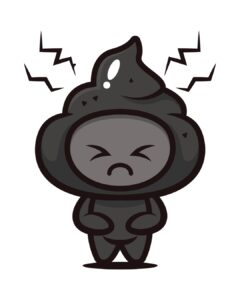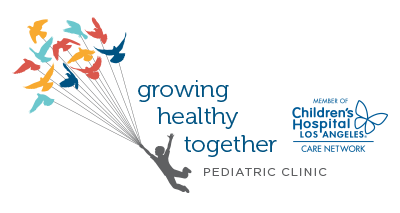 When you become a parent, you also become something of a professional poop rainbow decoder, and each change might bring new information about your baby’s health.
When you become a parent, you also become something of a professional poop rainbow decoder, and each change might bring new information about your baby’s health.
A newborn’s very first poop is a dark, sticky, tar-like substance called meconium. Meconium occurs only within the first week of life, and after this passes, you will see shades of brown, green, and yellow. Most breastfed babies have yellow stools, while formula-fed babies may have more tan or green tones.
As your little one starts trying solid foods, you may notice another shift in the poop color (Jana & Shu, 2021). And sometimes, unusual colors are simply the result of diet or certain medications, such as Pepto Bismol or iron supplements (Calo & Reeves, 2024).
Most colors of poop are harmless signs that your baby’s body is growing and adapting. Still, some shades can signal an issue worth checking out.
Black Poop
Black poop is expected during the first week of life as your baby passes meconium (Solasaari et al., 2024). After that, it is much less common and may point to bleeding in the upper gastrointestinal (GI) tract (blood turns black as it is digested) (Jana & Shu, 2021; Reynolds et al., 2023).
For breastfed babies, black flecks may come from swallowed maternal blood if a breastfeeding parent has cracked or bleeding nipples. Sometimes, dark green stools can look black, so it helps to check in good light.
Harmless causes include iron supplements, activated charcoal, black licorice, chocolate, blood sausage, beets, and certain food dyes.
White Poop
White or pale poop is always a reason to call your provider promptly (Jana & Shu, 2021). This may indicate a problem with the liver or gallbladder. Typically, bile gives poop its brown color, so white stools can mean bile is not being produced or is being blocked by a bile duct obstruction.
Red Poop
Not all red poop means blood. The most common reason for red stools in babies is food coloring or naturally red foods (Calo & Reeves, 2024).
If blood is present, it is often due to a minor cause like an anal fissure (a small tear in the anus) or swallowed blood (Reynolds et al., 2023). Anal fissures can happen when a baby strains to pass large, hard stools, often linked to constipation. You can read more on constipation and discuss gentle relief strategies with your pediatric provider.
Bright Red Poop
Bright red stools are usually diet-related, mainly if your child recently ate beets, watermelon, or foods with red dye (Calo & Reeves, 2024). Babies have shorter digestive tracts so that these pigments can pass through quickly.
If the stool looks raspberry-colored with a mucus-like texture, it could indicate bleeding from the lower intestinal tract (Reynolds et al., 2023). If you have not seen your child eat something red, or the color persists, save a sample for your provider to examine or test.
Dark Red Poop
Dark red stools can be caused by swallowed blood, certain foods, or medications like Pepto-Bismol, iron supplements, or some antibiotics (Calo & Reeves, 2024).
They may also suggest upper GI tract bleeding (blood darkens as it moves through digestion), sometimes linked to milk allergies (Reynolds et al., 2023). Rarely, dark red poop can signal a bacterial infection from contaminated food, travel, or exposure to someone with a GI infection.
Purple Poop
Purple tones are often just a variation of red stool, most caused by diet (Calo & Reeves, 2024).
 Pink Poop
Pink Poop
Light pink or rose-colored stools are usually harmless and linked to foods like cranberries, tomatoes, cherries, or beets. In rare cases, pink stool can signal a bacterial infection in breastmilk (Kumar et al., 2025).
Green Poop
Green stools are common in babies and can result from eating leafy green vegetables or from bile moving quickly through the intestines, as with diarrhea (LeWine, 2024; Solasaari et al., 2024).
Dark green stools often come from extra iron in the diet or supplements. This iron can sometimes make stools thicker and harder to pass (LeWine, 2024). Do not stop prescribed iron since it is essential for brain growth and development, but let your provider know if constipation becomes a concern.
Brown Poop
Light brown, “hummus-like” stools are typical in formula-fed babies. If they take on a guacamole-green tint after starting solids, that is also normal. Dark brown poop is the most common, making up about 90% of diaper changes. Dark brown poop means your baby’s digestive system and gut bacteria are working well, especially after solid foods are introduced.
 Yellow Poop
Yellow Poop
Mustard yellow is the classic color for breastfed babies and is entirely normal (Solasaari et al., 2024). It may contain small, yellow white “seeds” from partially digested milk solids.
What to Do if Poop Looks Abnormal
- Think about food first. If you suspect a food or drink caused the change, remove it and see if the color resolves within 48 hours.
- Take a photo. A picture helps your provider assess whether it is normal or concerning.
- Check for other symptoms. Fever, lethargy, vomiting, or diarrhea alongside abnormal poop warrants a call to your provider. Review guidelines on when to go to the ER.
- Consider texture. Constipation can change stool color.
- Save a sample. If needed, your provider can send it to the lab for testing.
Most poop colors are just part of your baby’s growing digestive system — but knowing which ones to watch out for helps you keep them healthy and comfortable. As always, parents and caregivers know their infants the best. Trust your instincts and don’t hesitate to reach out to your provider with your questions and concerns!
References
Calo, R., & Reeves, P. T. (2024, July 10). Red Stools in Children: Common Causes. HealthyChildren.Org. https://www.healthychildren.org/English/health-issues/conditions/abdominal/Pages/red-stools-in-children-common-causes.aspx
Jana, L. (2021, March 18). The Many Colors of Baby Poop. HealthyChildren.Org. https://www.healthychildren.org/English/ages-stages/baby/Pages/The-Many-Colors-of-Poop.aspx
Kumar, C., Patidar, R., Prasad, A., & Shedabale, D. S. (2025). Breast milk turning pink: A clue to Serratia marcescens colonization—a case report. Egyptian Pediatric Association Gazette, 73(1), 36. https://doi.org/10.1186/s43054-025-00378-3
LeWine, H. E. (2024, April 1). Green poop: What stool color can indicate about health. Harvard Health. https://www.health.harvard.edu/staying-healthy/green-poop-what-stool-color-can-indicate-about-health
Reynolds, S., Yatham, S., Anand, N., & Shresthra, B. (2023). The infant with rectal bleeding. Paediatrics and Child Health, 33(4), 110–113. https://doi.org/10.1016/j.paed.2023.01.005
Solasaari, T., Korpela, K., Lommi, S., Hyvönen, S., Gardemeister, S., Merras-Salmio, L., Salonen, A., de Vos, W. M., & Kolho, K.-L. (2024). Bowel function in a prospective cohort of 1052 healthy term infants up to 4 months of age. European Journal of Pediatrics, 183(8), 3557–3565. https://doi.org/10.1007/s00431-024-05625-0




